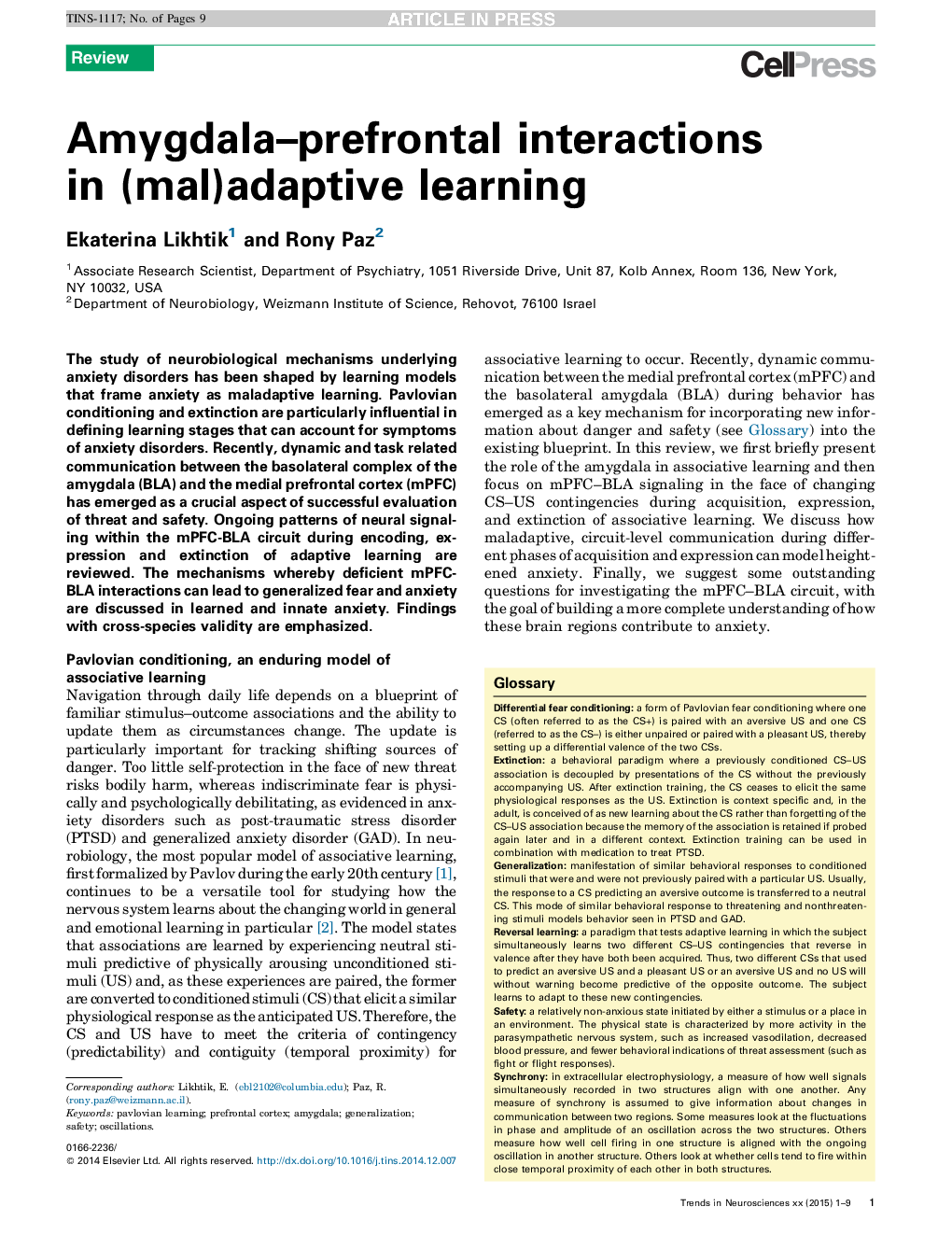| Article ID | Journal | Published Year | Pages | File Type |
|---|---|---|---|---|
| 6286688 | Trends in Neurosciences | 2015 | 9 Pages |
Abstract
The study of neurobiological mechanisms underlying anxiety disorders has been shaped by learning models that frame anxiety as maladaptive learning. Pavlovian conditioning and extinction are particularly influential in defining learning stages that can account for symptoms of anxiety disorders. Recently, dynamic and task related communication between the basolateral complex of the amygdala (BLA) and the medial prefrontal cortex (mPFC) has emerged as a crucial aspect of successful evaluation of threat and safety. Ongoing patterns of neural signaling within the mPFC-BLA circuit during encoding, expression and extinction of adaptive learning are reviewed. The mechanisms whereby deficient mPFC-BLA interactions can lead to generalized fear and anxiety are discussed in learned and innate anxiety. Findings with cross-species validity are emphasized.
Related Topics
Life Sciences
Neuroscience
Neuroscience (General)
Authors
Ekaterina Likhtik, Rony Paz,
